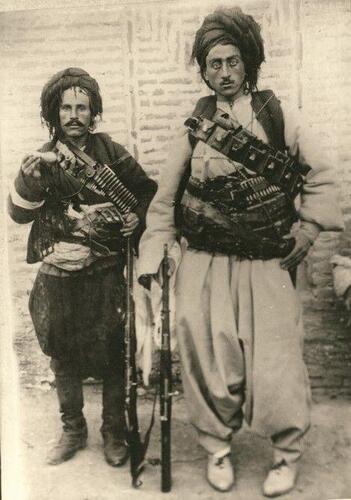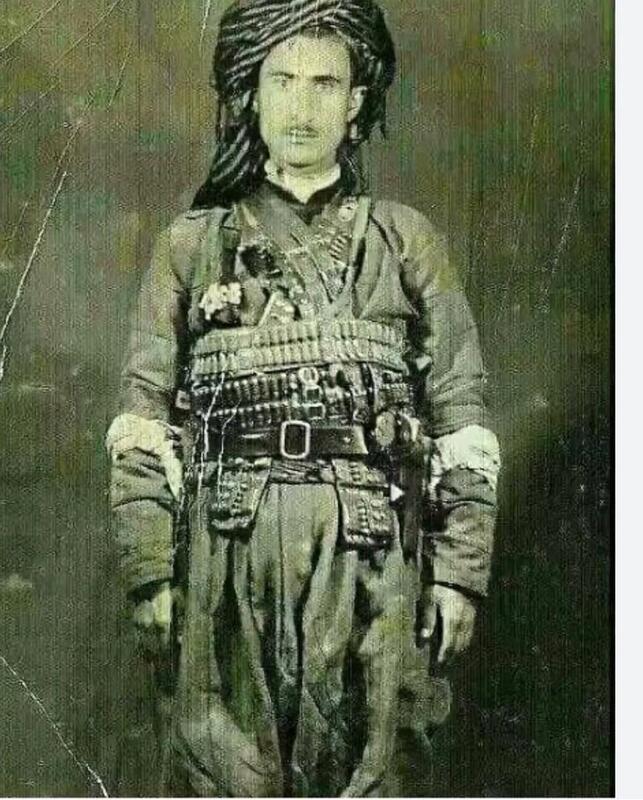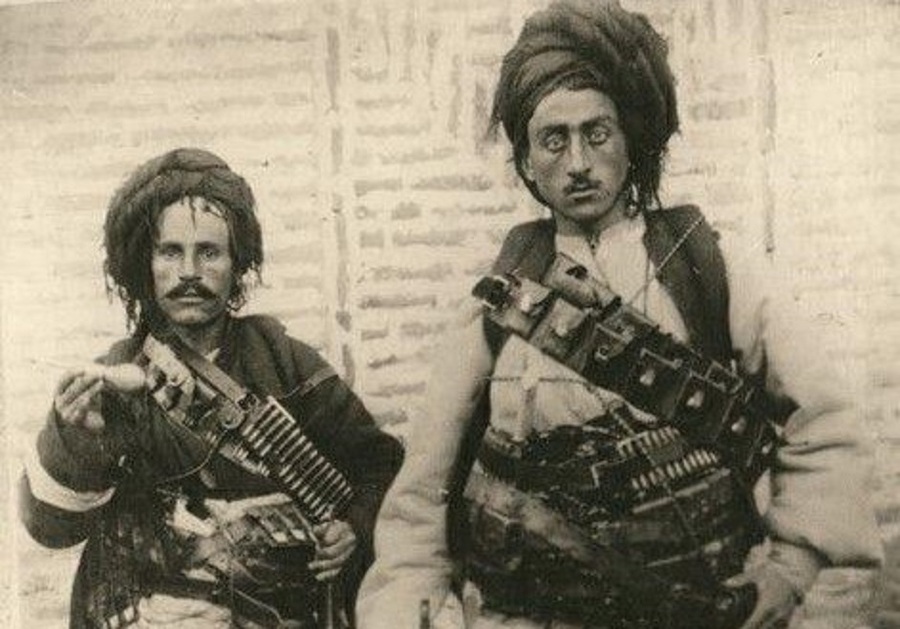Diako Shaswari
Read the first part of this article here
Atta Kal's armed uprising and conflict with the central government:
Based on the history we mentioned earlier which was about 1937- 38, Atta Kal was temporary to "Reza Khan Pahlavi's" reign and had revolted against it. Reza Khan was planning to establish a Nation-state government at that time. He decided to do what "Mustafa Kemal Pasha" or "Ataturk" had done in Turkey. One of Reza Shah's plans was to carry out assimilation widely in all parts of Iran. He classified this plan amongst the policies known as Reza Khan's reformations in Iran. A part of this reformation carried out by Reza Khan was to assimilate the culture of people and make the nomad tribes settle down in one place, assimilating all the nations of Iran to wear the same clothes and attempting to force Persian language on everyone and fading other languages of Iranian nations. In order to carry out all these policies, Reza Khan killed and arrested tens and hundreds of people all around Iran.
One of those nations that was harmed more than the other nations of Iran in this assimilation plan for wearing standard clothes and speaking standard language was the Kurdish nation. Thus, in addition to all the damages that the lord and peasant system had caused the lower classes of the Kurdish people, the central government also was pressuring them to make people obey the new rules and establish the cultural and linguistic policies by their official staff. The people that already had ancient cultural and social traditions for thousands of years, were under economic pressure by Reza Khan and also were forced to do some cultural norms by the central government while they could not play the slightest role in the political condition of Iran.
All these meant to capture a nation that lived under the authority of such a state. Thus, throughout the East part of Kurdistan, some people were continually thinking about destroying the lord and peasant system which was a cultural-economical system, and revolting against the monarchy which was the absolute authority of Reza Khan.

Atta Kal (the armed man on the left) and his friend
Both of the social and political revolutions aimed to open a new door for the Kurdish people. The leaders of those revolutions wanted to make the government understand their demands. "Atta Kal" was one of those people who began an armed revolution against the Pahlavi government from the police station of Siwar in Marivan. However, his revolution was not based on nationalist motivations. All the narrations about this event emphasize the social-economical motivations of this uprising. Obviously, it spread among different social classes later and thus the revolution expanded. His revolution was a movement to understand the pressures forced upon some people living in a system that was ignoring their rights. This is why we can see the least number of nationalistic phenomena in Atta Kal's revolution. However, we can see those phenomena that all those who were revolting against the system joined him in the areas where "Atta Kal" was active. In other words, gradually the foundation of an idea was forming that would resist the system.
As "Dr. Baqer Piri" has mentioned in an article all those who lived in the Marivan region to Divandara and were against that social and political system joined Atta Kal. We can mention "Bawa Tahir", "Mam Piyaw", "Hama Loqa", "Hama Awla", "Awoul Fattah", "Hamawmin Piroz", "Seyyed Abbas Kawla", "Ali Balban", "Maji Bichkol", "Sha Mohammad Choxarashi", "Hama Morad", "Xanxan Kirmashani", "Mohammadmorad Afrasyawi", "Bila Xazan", "Maji Ombar", Hama Morad Ombar" and many others who joined the armed revolution of "Atta Kal" against the economic-social system of lords and peasants and Reza Khan's policies.
As discussed in "The Contemporary History of Kurds" by "Dr. Kamal Rohani" in 1936 Atta Kal and sixty-six other armed men succeeded in defeating hundreds of Pahlavi's forces in an unfair and difficult battle in "Shajo" Mountain near "Bayinchop" and after that, this mountain was called "Seyyed Atta's trench".
Seyyed Atta's uprising effects could be seen in the people of this region's confidence and self-esteem. They gave up on solving their problems via the unfair system of the government's judiciary and instead, they would go to Atta Kal to help them settle their social problems. As we mentioned before, there were some other uprisings in other areas against Reza Khan Pahlavi's unfair demands. For example, in the Bane region "Hama Tal's" uprising was going on. Unfortunately, most of those uprisings against the central government did not agree on political ideology or social ideas so they could not join each other which made them alone against the government that was their common enemy. These groups would fight one another and make each other weaker.

Hama Tal of Bane
Two groups of "Atta Kal" and "Hama Tal" that were both uprisings against the Pahlavi system fought in the "Hanjiran" village. They were quarreling and this quarrel ended in Hama Tal and twelve men of his being killed by Atta Kal's armed forces. Clearly, these men's murders by Atta Kal changed the events' consequences in all the areas of Bane to Marivan to Sawlawa and Sna and later in Divandara which were all the areas where were under the influence of this movement. These forces now had to fight the government's forces on the one hand and consume their energy and ability to fight each other on the other hand. Unfortunately, these two forces fought once again, and this time Hama Tal's descendants killed the Qalata Rasha revolutionary man in his 40s in Qishlagh mountain near Shiler region in the South part of Kurdistan in 1938. "Saeed Bag", Hama Tal's cousin killed Atta Kal. This happened while Atta Kal, Hama Tal, and Saeed Bag all were fighting against the unfair and cruel government. Due to the fame Atta Kal had during his revolution against the central government, his corpse was transferred to Suleimani by "Sheikh Mahmoud Hafid's" family and was buried in "Girdi Saywan" with respect.








